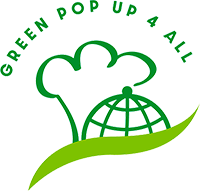One year in the project, it was time for the third meeting with teachers and students at Kuressaare Ametikool (RTC). We followed the procedure with cooking, visits at local producers and staff meeting.
The home of the spa
Saaremaa/Ösel is the one of the most popular tourist resorts in Estonia; specialized on spa. Therefore was it only natural that the party were accommodated in a spa hotel. There are 15 of them in Kurassare and surroundings so the local school has both education for chefs and masseur as well as hairdressers and other jobs within the service sector.
After Ave Paaskivi introduced the school, presented the week’s agenda, and had everyone introduce themselves, Mare Nooda took the floor to deliver a lecture on the importance of daring to try, which happened to be the theme of the entire week. Mares story emphasized the need to seize opportunities. What initially seemed unprofitable could become valuable when combined with other products and activities. For instance, she shared her own experience with bread baking. Initially, her bread took too long to bake and sell, but when she started producing cheese and clothing as well, she found the base for hosting themed parties for larger groups.
Throughout the week, the group made three study visits, each highlighting the types of products that the future hospitality industry should focus on. During these visits, the students also learned about existing challenges and the need for a fresh perspective to discover new profitable business approaches. A new world demands new ideas through new perspectives.
Buckwheat, fish and windmills
The first visit was to Karmeli, where Aivar and Karel demonstrated the manufacturing process of buckwheat and hemp oil. The facility they were operating in was built during the Soviet era. It had been abandoned for some years until Aivar and Karel started renovating it and developing their business in the 2010s. They decided to invest in buckwheat, a traditional crop in the Baltic region and Russia. Their primary product was yellow buckwheat, which had more versatile uses than the brown variety. The byellow buckwheat are living seeds that can be transformed into flour, oil, and heating pads. Brown buckwheat, on the other hand, was mainly used for porridge and was therefore less profitable.
The second visit took the students to the Pähkla fish farm, where Remy Kolberg provided a tour and offered taste samples. Pähkla had invested in the cultivation of crayfish and trout. The presence of abundant fresh water near the fish farm made it an ideal location for their farm. The major advantage of fish farms is that they don’t impact the natural stock in the oceans. However, they had to carefully control and purify the outflow of water to prevent the spread of diseases and contamination.
The third and final study visit was to The Windmill, where Kaupo Pastak explained how local ingredients not only created a unique product but also contributed to storytelling. By combining these two aspects, The Windmill added value to its products, enhancing their worth and making them competitive against globally mass-produced goods.
When the big day finally arrived…
After a few online meetings and a meeting at the school where menus and table settings were planned, it was time to enter the kitchen on Wednesday. The food needed to be prepared, and ideas had to be tested. It turned out that most things worked well, and the panic leading up to Thursday disappeared.
When the big day arrived, there was a lot of work in the kitchen. The teams worked in harmony with the teachers as coach. Because it was so smooth, the food was on the table on time and as it was supposed to be served.
Theory becomes curriculum
In the kitchen, the ideas that formed the basis of the project were tested. The participants refined their experiences through collaboration. Good ideas were saved, while those that didn’t work were noted and set aside. What remained formed the foundation for the new manual on sustainable cooking and teaching that the project was developing.
It is still a long way until we have a curriculum, but we are much closer now than we were a few days ago. It is clear that one must have meet both online and in person.
Difficulties along the way
As the project proceeds, we notice that the language barrier is difficult to cross. It takes several days before everyone is comfortable enough to start talking, ask questions and active participate in a conversation. And even then, it is with some struggle.
